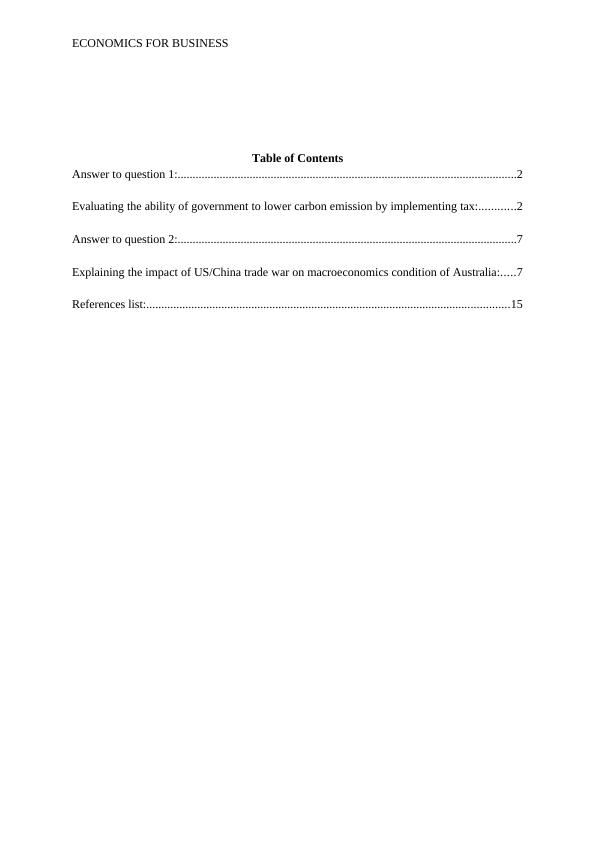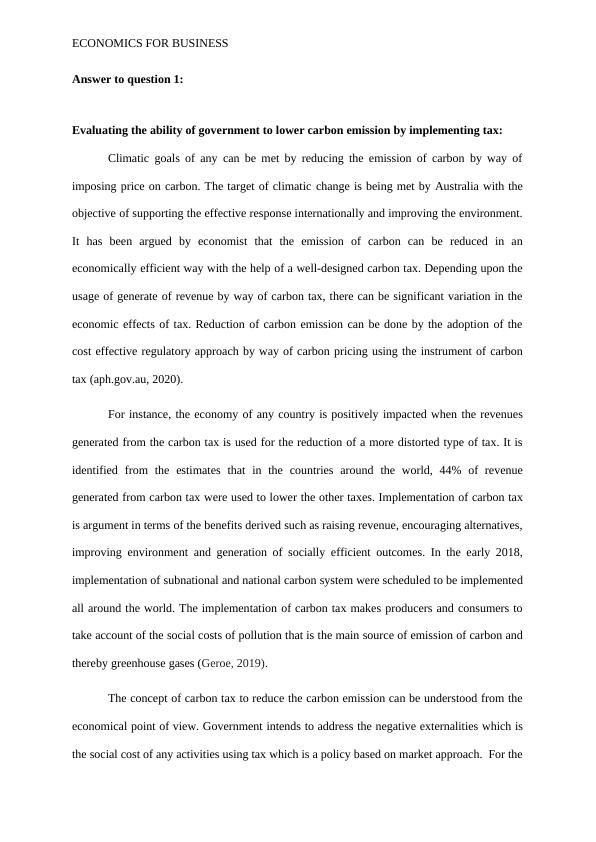Impact of US/China Trade War On Macroeconomics Condition
Analyzing the government's ability to reduce carbon emissions through the implementation of a tax.
20 Pages5744 Words12 Views
Added on 2022-09-08
Impact of US/China Trade War On Macroeconomics Condition
Analyzing the government's ability to reduce carbon emissions through the implementation of a tax.
Added on 2022-09-08
ShareRelated Documents
End of preview
Want to access all the pages? Upload your documents or become a member.
Importance of Reducing Carbon Emission and Implementation of Carbon Tax in Australia
|6
|910
|374
Business Economics And Management Assesment
|20
|5432
|17
Environmental Economical Problems docx.
|5
|548
|59
Assignment on Carbon Tax
|6
|981
|135
Emission Trading Scheme in Agriculture: Arguments for and Against
|7
|1314
|332
Climate Change Economics Questions 2022
|3
|595
|15




